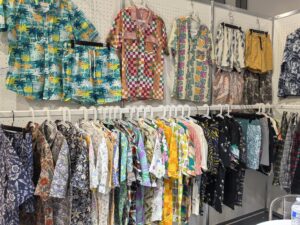In the apparel and textile industry, fabric classification is fundamental. The choice of fabric not only defines the quality and comfort of garments but also influences cost, durability, and brand positioning. For B2B buyers, wholesalers, and apparel brands, understanding different types of fabrics and textile fibers helps in making informed sourcing decisions.
1. Fabric Classification by Raw Material Composition
🔹 Pure Fabrics
Made from a single type of fiber. These fabrics offer consistent performance and are widely used in both casualwear and workwear.
- Examples: 100% cotton poplin, polyester twill, rayon fabric
🔹 Blended Fabrics
Produced by mixing two or more fibers into yarns. Blends combine the advantages of different fibers, such as comfort and durability.
- Examples: polyester-cotton blends, polyester-viscose, stretch fabrics
🔹 Interwoven Fabrics
Created when warp and weft yarns use different fibers, offering unique texture and properties.
- Example: cotton-rayon interwoven fabric

2. Classification of Textile Fibers
(1) Natural Fibers
Sourced directly from plants or animals, these fibers are breathable and eco-friendly.
- Plant fibers: cotton, flax, ramie
- Animal fibers: wool, cashmere, mohair, camel hair, silk (mulberry & tussah silk)
(2) Chemical Fibers
Manufactured through chemical or physical processes, chemical fibers provide strength and flexibility.
- Regenerated Fibers
Derived from natural cellulose, reprocessed into new fibers. - Examples: viscose, modal, cupro

- Synthetic Fibers
Made from petroleum or coal-based raw materials through polymerization. - Examples: polyester, nylon, acrylic, spandex
Why Fabric Classification Matters for B2B Buyers
- ✅ Better Material Selection: Match fabrics to product requirements (shirts, outerwear, uniforms, casualwear).
- ✅ Quality Control: Predict shrinkage, breathability, and wear resistance.
- ✅ Cost Efficiency: Optimize sourcing between natural, blended, and synthetic options.
- ✅ Market Positioning: Align fabric properties with consumer expectations.
As a professional B2B apparel manufacturer, we provide a wide range of fabrics including cotton, polyester, rayon, blends, and sustainable textiles to meet diverse sourcing needs.
FAQs on Fabric Classification
Q1: What are the main types of fabrics?
A: Fabrics are commonly classified as pure fabrics, blended fabrics, and interwoven fabrics.
Q2: What is the difference between natural and synthetic fibers?
A: Natural fibers come from plants or animals (cotton, wool, silk), while synthetic fibers (polyester, nylon, spandex) are man-made from chemical processes.
Q3: Which fabrics are most popular in B2B apparel sourcing?
A: Cotton and polyester blends are the most widely used due to their balance of comfort, durability, and cost-effectiveness.
Q4: How can I choose the right fabric for my apparel line?
A: It depends on your target market, garment type, and price point. Our sourcing team can provide fabric samples and recommendations.
Conclusion
Understanding fabric classification and textile fibers is key for brands and wholesalers to make the right sourcing decisions. At [Your Company Name], we support B2B clients with custom apparel manufacturing and a wide fabric library tailored to global market needs.
👉 Contact us today to explore fabrics for hawaiian shirts, shorts, outerwear, flannel shirts, and printed T-shirts**.






